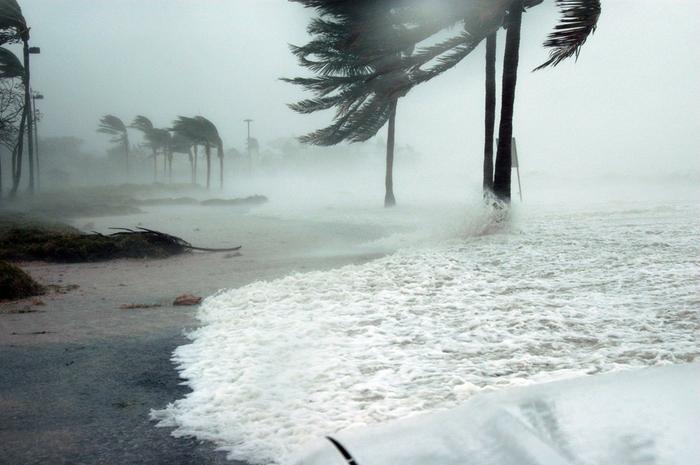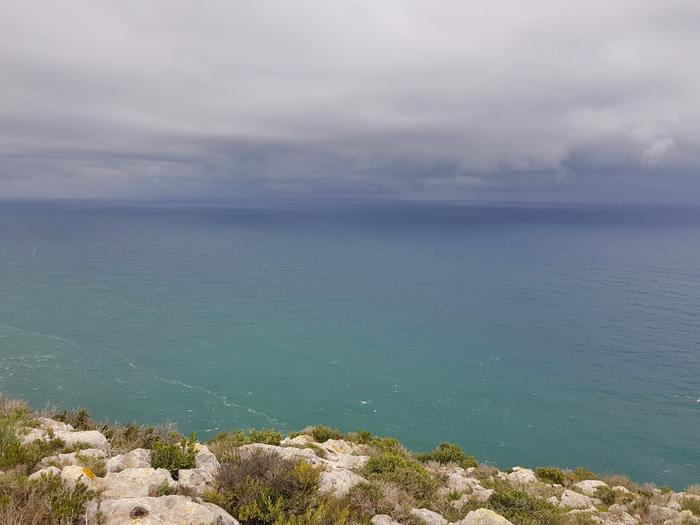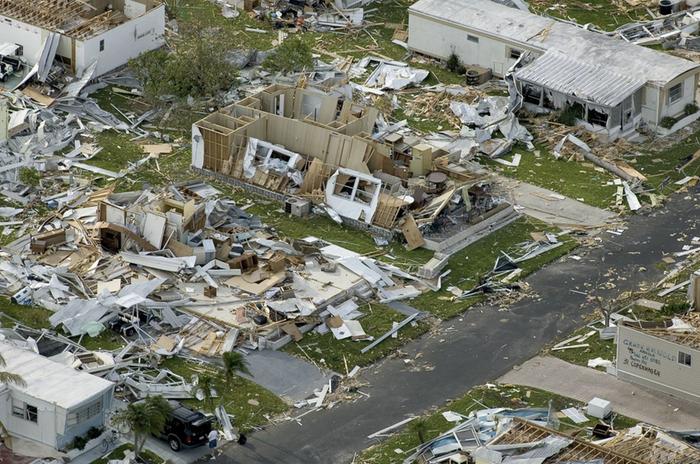The Atlantic hurricane season lasts from June to November
Hurricanes are intense tropical storms that form over large, warm sea areas.

Hurricanes are tropical cyclones found either in the North Atlantic or Eastern Pacific areas.
A tropical cyclone's name depends on its geographic location. In Northwestern Pacific hurricane-like storms are called typhoons, and in the Indian Ocean and South Pacific areas they are called tropical cyclones.
An "African seed" can trigger hurricane formation
Most of the hurricanes that form in the North Atlantic, Gulf of Mexico or East of Central America are triggered by so called "African seeds". These seeds are often clusters of thunderstorms close to the African West coast. The storms move towards the Western North Atlantic carried by easterly air currents. In favourable conditions a low pressure center appears in conjunction of these thunderstorm clusters, and the thunderstorms begin to circle it counterclockwise. This can mark the onset of hurricane formation.

Tropical depressions can strengthen and become hurricanes
As the low pressure center forms, its wind speeds are below 40 mph. In favourable conditions a tropical depression can strengthen into a tropical cyclone. In the North Atlantic or Eastern Pacific these cyclones are called hurricanes.
Conditions that favour hurricane formation are:
- Sea surface temperatures of 79–80 °F in a thick enough layer.
- Water vapour evaporation from the sea surface. This is aided by strong winds towards the low pressure center.
- The condensation of water vapour needs to be strong around the center of the tropical depression. With strong condensation a lot of heat is released into the surrounding air. This helps the storm to form and strengthen.
- Small wind speed and direction fluctuations between different height levels. In other words, not much wind shear.
- A location of no closer than around 300 miles from the equator. To strengthen, tropical cyclones require the presence of Coriolis force, which doesn't exist close to the equator.
During El Niño years the likelihood of hurricanes grows in the Eastern Pacific, but lowers in the Northern Atlantic. During La Niña years the opposite happens.
Hurricane strength and destruction
Tropical depressions become tropical storms, when their maximum sustained surface winds (one-minute average) exceed 38 mph, but are no more than 73 mph.
If conditions are favourable, tropical storms can become hurricanes. If a storm's maximum sustained surface winds (one-minute average) are at least 74 mph, it is called a hurricane.
A hurricane's strength and destructive potential is described on the Saffir-Simpson hurricane wind scale as follows:
| Category | 1 min. maximum sustained winds (mph) | 1 min. maximum sustained winds (kn) | Effects |
|---|---|---|---|
| 1. | 74–95 | 64–82 | Well-constructed frame homes could have damage to roof, shingles, vinyl siding and gutters. Large branches of trees will snap and shallowly rooted trees may be toppled. Extensive damage to power lines and poles likely will result in power outages that could last a few to several days. |
| 2. | 96–110 | 83–95 | Well-constructed frame homes could sustain major roof and siding damage. Many shallowly rooted trees will be snapped or uprooted and block numerous roads. Near-total power loss is expected with outages that could last from several days to weeks. |
| 3. | 111–129 | 96–112 | Well-built framed homes may incur major damage or removal of roof decking and gable ends. Many trees will be snapped or uprooted, blocking numerous roads. Electricity and water will be unavailable for several days to weeks after the storm passes. |
| 4. | 130–156 | 113–136 | Well-built framed homes can sustain severe damage with loss of most of the roof structure and/or some exterior walls. Most trees will be snapped or uprooted and power poles downed. Fallen trees and power poles will isolate residential areas. Power outages will last weeks to possibly months. Most of the area will be uninhabitable for weeks or months. |
| 5. | 157 or more | 137 or more | A high percentage of framed homes will be destroyed, with total roof failure and wall collapse. Fallen trees and power poles will isolate residential areas. Power outages will last for weeks to possibly months. Most of the area will be uninhabitable for weeks or months.
|

Naming of hurricanes
Hurricanes are named so they can be easily referred to in media and by warning services.
Hurricanes are named by the World Meteorological Organization (WMO). Hurricane naming lists are alphabetical, and the names alternate between male and female names. There are six separate hurricane name lists, and a hurricane cannot get the same name more often than once every six years.
The names of hurricanes that are particularly destructive are struck off the name lists and replaced by other names with the same initial.
Some of the most destructive hurricanes have been category five hurricanes. For example Irma (2017), Wilma (2005), Katrina (2005) Andrew (1992) and Allen (1980).
Hurricane season
The Atlantic hurricane season lasts from June to November. Outside this period Atlantic hurricanes are very rare. The hurricane season peaks in September, when hurricanes are statistically most frequent.
An average year sees about 10 named storms. The most active year on record was 2020 with 30 named storms (not all of them hurricane strength). The most active hurricane year on record was 2005 with altogether 15 hurricanes.